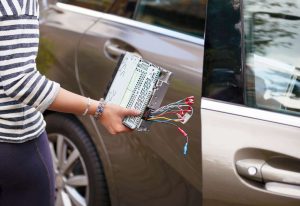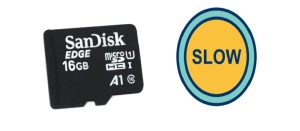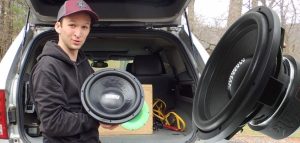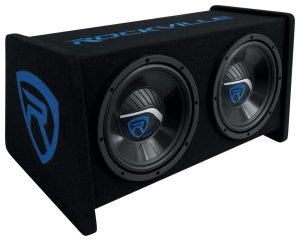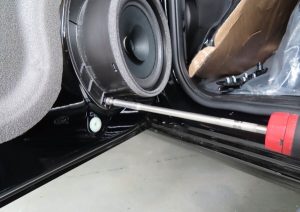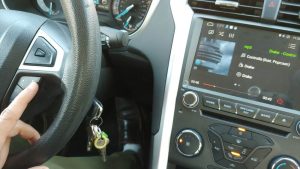The 2004 Jeep Wrangler delivers rugged charm and off-road prowess, but its factory audio system often leaves much to be desired. Thin sound, weak bass, and distortion at higher volumes frustrate music lovers. Upgrading the speakers transforms your driving experience, whether you’re cruising city streets or tackling trails. This guide walks you through choosing the best speakers, installing them, and optimizing your audio setup for crystal-clear sound. Let’s dive into how to elevate your Jeep’s audio game.
Contents
- Why Upgrade Your 2004 Jeep Wrangler Speakers?
- Choosing the Right Speakers for Your 2004 Jeep Wrangler
- Tools and Materials Needed
- Step-by-Step Guide to Installing Speakers
- Enhancing Your Audio Setup
- Common Installation Challenges and Solutions
- Maintenance Tips for Long-Lasting Audio
- Cost Breakdown
- Why This Upgrade Is Worth It
Why Upgrade Your 2004 Jeep Wrangler Speakers?
Factory speakers in the 2004 Jeep Wrangler prioritize cost over quality. Paper cones and small magnets produce lackluster sound that struggles against road noise. Upgrading to aftermarket speakers enhances clarity, boosts bass, and improves volume control. Imagine hearing every guitar riff or drumbeat with precision, even with the top down. Better speakers also handle higher power, reducing distortion and delivering a richer listening experience.
Beyond sound quality, modern speakers offer durability suited for the Jeep’s open-air environment. Water-resistant materials and UV-protected components withstand dust, moisture, and sun exposure. Upgrading isn’t just about luxury—it’s about building an audio system that matches your adventurous lifestyle.
Choosing the Right Speakers for Your 2004 Jeep Wrangler
Selecting the best speakers requires understanding your Jeep’s setup and your audio preferences. The 2004 Wrangler has two main speaker locations: the front soundbar (overhead) and the front dash. Each requires specific sizes and types for a seamless fit.
Speaker Sizes
- Front Soundbar: Accepts 6.5-inch coaxial or component speakers. These handle most of the audio output, making them critical for sound quality.
- Front Dash: Fits 4×6-inch speakers or 4-inch round speakers with adapters. These complement the soundbar, adding depth to vocals and midrange.
Types of Speakers
- Coaxial Speakers: Combine woofer and tweeter in one unit. They’re easy to install and budget-friendly, ideal for most Jeep owners.
- Component Speakers: Separate woofer, tweeter, and crossover for superior sound clarity. They require more installation effort but shine for audiophiles.
- Marine-Grade Speakers: Designed for harsh environments, these resist water, dust, and UV rays—perfect for open-top Jeeps.
Key Features to Look For
- Power Handling: Match speakers to your head unit or amplifier. Look for RMS power ratings between 50-100 watts for stock systems or higher for amplified setups.
- Sensitivity: Higher sensitivity (above 90 dB) means better performance with less power, crucial for stock head units.
- Materials: Polypropylene cones, rubber surrounds, and silk dome tweeters offer durability and balanced sound.
- Weather Resistance: IP65 or higher ratings protect against moisture and dust, ensuring longevity.
Top Speaker Recommendations
- Kicker DS Series 6.5-Inch Coaxial Speakers
- RMS: 60 watts
- Sensitivity: 90 dB
- Weather-resistant polypropylene cones
- Price: ~$80/pair
- Why: Affordable, punchy bass, and clear highs for trail-ready audio.
- JL Audio C2-650 Component Speakers
- RMS: 100 watts
- Sensitivity: 91 dB
- Silk dome tweeters for crisp vocals
- Price: ~$200/pair
- Why: Premium sound for audiophiles, with rugged build quality.
- Alpine SPS-610C 6.5-Inch Marine-Grade Speakers
- RMS: 80 watts
- Sensitivity: 89 dB
- IP65 water resistance
- Price: ~$120/pair
- Why: Built for harsh conditions, ideal for open-air Jeeps.
- Pioneer TS-A4670F 4×6-Inch Dash Speakers
- RMS: 30 watts
- Sensitivity: 88 dB
- Lightweight design for easy dash install
- Price: ~$60/pair
- Why: Budget-friendly upgrade for improved midrange and vocals.
Budget vs. Premium
Set a budget before shopping. Entry-level speakers ($50-$100) deliver solid improvements over stock. Premium options ($150-$300) offer richer sound and durability but may require an amplifier for best results. Balance cost with your audio goals—casual listeners can stick to coaxial, while enthusiasts might splurge on components.
Tools and Materials Needed
Gather these tools to ensure a smooth installation:
- Phillips and flathead screwdrivers
- Torx T20 driver (for dash speakers)
- Panel removal tool (to avoid scratching trim)
- Wire cutters/strippers
- Crimp connectors or soldering kit
- Speaker adapters (for dash speakers, if needed)
- Electrical tape
- Socket wrench set (for soundbar access)
Optional but helpful:
- Sound-deadening mats (e.g., Dynamat) to reduce rattles
- Multimeter to check wiring polarity
Step-by-Step Guide to Installing Speakers
Follow these steps to replace your 2004 Jeep Wrangler’s speakers. Work carefully to avoid damaging interior panels or wiring.
Step 1: Prepare Your Jeep
Park on a flat surface and disconnect the negative battery terminal to prevent electrical shorts. Gather all tools and speakers, and keep a small container for screws to avoid losing them.
Step 2: Remove the Front Dash Speakers
- Access the Speakers: Use a panel removal tool to pry off the dash speaker grilles. Start at the edges to avoid cracking the plastic.
- Remove Old Speakers: Unscrew the 4×6-inch speakers using a Torx T20 driver. Disconnect the wiring harness, noting the positive and negative terminals.
- Install New Speakers: Connect the new speakers, ensuring correct polarity (match positive to positive, negative to negative). Use adapters if installing 4-inch speakers. Secure with screws and test before replacing grilles.
- Replace Grilles: Snap the grilles back into place, ensuring a snug fit.
Step 3: Replace the Soundbar Speakers
- Access the Soundbar: Lower the windshield (if possible) for easier access. Remove the soundbar’s padding by unscrewing bolts with a socket wrench.
- Remove Old Speakers: Unscrew the 6.5-inch speakers and disconnect the wiring. Keep track of wiring orientation.
- Install New Speakers: Connect the new speakers, double-checking polarity. Secure them with screws, ensuring they sit flush. For component speakers, mount tweeters and crossovers per manufacturer instructions.
- Reassemble: Replace the soundbar padding and tighten bolts. Test the speakers before fully reassembling.
Step 4: Test the System
Reconnect the battery and power on your stereo. Play music to check for clarity, balance, and distortion. Adjust the head unit’s equalizer (bass, treble, balance) to optimize sound. If you hear rattles, apply sound-deadening mats to the soundbar or dash.
Step 5: Secure and Clean Up
Double-check all screws and connections. Tuck away excess wiring with zip ties to prevent buzzing. Clean the interior to remove dust or debris from the install.
Enhancing Your Audio Setup
Speakers alone transform your Jeep’s sound, but additional upgrades take it further.
Add an Amplifier
An external amplifier boosts power, unlocking your speakers’ full potential. Choose a compact 4-channel amp (e.g., Kicker KEY200.4) that fits under a seat. Expect to spend $100-$300, plus wiring kits (~$50).
Upgrade the Head Unit
A modern head unit with Bluetooth, Apple CarPlay, or Android Auto enhances functionality. Look for models with high preamp voltage (4V or higher) for cleaner sound. Budget options start at $100, while premium units cost $300+.
Install a Subwoofer
For deeper bass, add a compact subwoofer. A 10-inch powered sub (e.g., Rockford Fosgate PS-8) fits in the cargo area and costs ~$250. It complements your speakers without overwhelming vocals.
Sound Deadening
Apply sound-deadening mats to the soundbar, doors, and floor. This reduces road noise and vibrations, letting your speakers shine. A basic kit costs $50-$100.
Common Installation Challenges and Solutions
- Wiring Issues: If speakers sound weak, check polarity. Swap positive and negative wires if needed.
- Fitment Problems: Use adapters for non-standard sizes. Test-fit speakers before final assembly.
- Rattles or Buzzing: Apply foam tape around speaker edges or use sound-deadening mats.
- No Sound: Verify head unit settings and check for blown fuses.
Maintenance Tips for Long-Lasting Audio
- Clean Regularly: Dust speakers with a soft cloth to prevent debris buildup.
- Check Connections: Inspect wiring annually for corrosion, especially in open-air Jeeps.
- Protect from Moisture: Use marine-grade speakers or add protective covers for off-roading.
- Avoid Overloading: Keep volume below distortion levels to extend speaker life.
Cost Breakdown
- Speakers: $100-$400 (two pairs)
- Tools/Adapters: $20-$50
- Optional Upgrades:
- Amplifier: $100-$300
- Head Unit: $100-$500
- Subwoofer: $200-$400
- Sound Deadening: $50-$150
- Total: $150-$1,200, depending on setup
Why This Upgrade Is Worth It
Upgrading your 2004 Jeep Wrangler’s speakers delivers immersive sound that matches the vehicle’s bold personality. Crisp vocals, punchy bass, and durable designs elevate every drive, from daily commutes to weekend adventures. With the right speakers and a straightforward install, you create a custom audio experience without breaking the bank.
Ready to crank up the volume? Choose your speakers, grab your tools, and transform your Jeep’s sound system today. Share your setup or ask questions in the comments—we’d love to hear about your audio journey!

